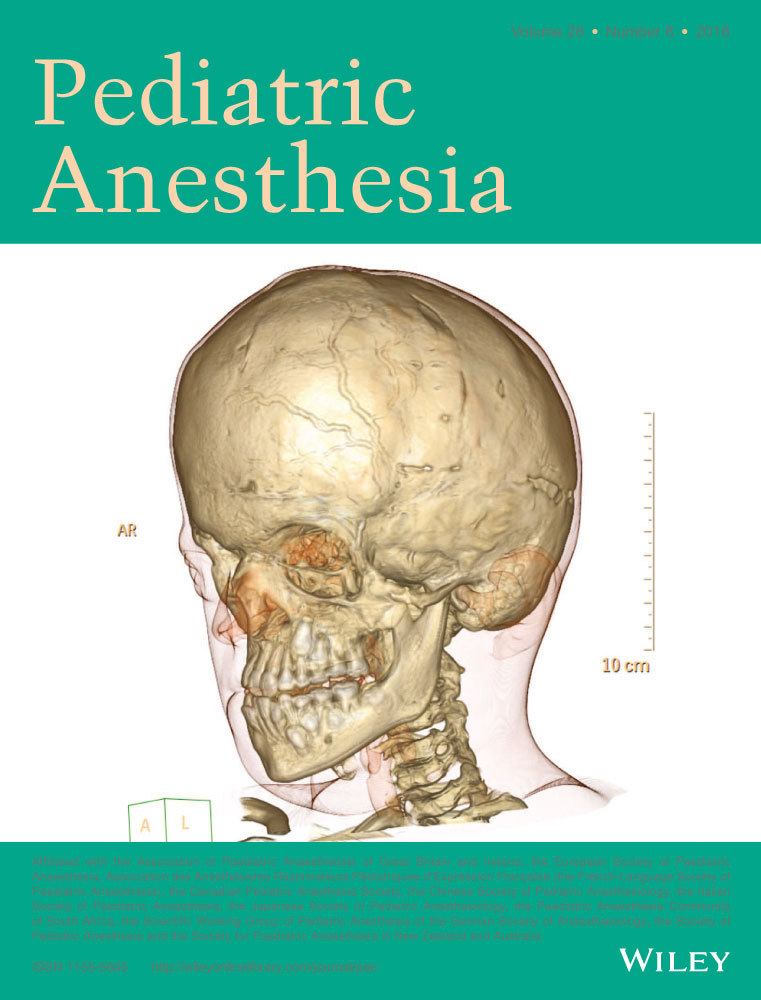Dorsal penile nerve block for circumcision in pediatric patients: A prospective, observer-blinded, randomized controlled clinical trial for the comparison of ultrasound-guided vs landmark technique
Summary
Background and aims
Circumcision is a frequently performed procedure in day case pediatric surgery. Dorsal penile nerve block has proven its effectiveness for the management of acute postoperative pain after circumcision. We investigated if the ultrasound-guided placement of a dorsal penile nerve block could reduce opioid requirement as compared to a landmark-based technique.
Methods
Three hundred and ten prepubertal children, aged between 52 weeks postconception and 11 years, were included in this prospective, observer-blinded, randomized controlled trial and received either a landmark- or an ultrasound-guided dorsal penile nerve block, using a caudal needle and injecting 0.1 mL/kg levobupivacaine 0.5% bilaterally. A single, experienced investigator performed all blocks. The primary endpoint was the number of patients in need of piritramide postoperatively as triggered by the Objective Pain Scale. Secondary outcome parameters included the cumulative dose of postoperatively administered opioids, the requirement to administer fentanyl intraoperatively, the need for paracetamol and ibuprofen during the first 24 postoperative hours, postoperative pain scores, the incidence of postoperative nausea and vomiting, the anesthesia induction time, and the time to discharge.
Results
The proportion of patients requiring postoperative piritramide did not differ significantly between both groups (Landmark: 38% vs Ultrasound: 47%, with a difference in proportion between both conditions (95% CI): 0.09 (0.2 to 0.02); P = .135). In addition, the cumulative doses of postoperative piritramide and intraoperative fentanyl, the postoperative need for paracetamol or ibuprofen, pain scores, the incidence of postoperative nausea and vomiting, and the time to discharge were not different either. However, the anesthesia induction time was significantly longer in the ultrasound-guided dorsal penile nerve block (median time [IQR]: Landmark: 11[9; 13] min vs Ultrasound: 13[11; 15] min, P < .001).
Conclusion
Compared with the landmark-guided, the ultrasound-guided dorsal penile nerve block did not reduce the need for postoperative analgesia after circumcision in children, but was associated with an increase in the procedural time.
CONFLICT OF INTEREST
No conflicts of interest declared.




